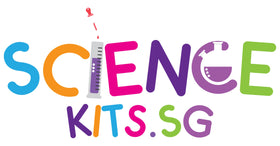
From Curiosity to Discovery: The Ultimate Guide to Science Kits
Science kits are educational tools designed to make learning science engaging, interactive, and fun. These kits typically come with a variety of components and materials that allow users to conduct experiments and explore scientific concepts hands-on. Science kits cater to a range of ages and interests, from young children just beginning to explore the world around them to older students and hobbyists delving into more complex scientific principles.
Components of a Science Kit
A typical science kit includes:
-
Instruction Manual: A detailed guide that explains the experiments or activities included in the kit. It often provides step-by-step instructions, background information on the scientific principles involved, and questions or challenges to enhance understanding.
-
Materials and Equipment: The kit contains the necessary materials and tools to perform the experiments. This can range from basic items like test tubes, beakers, and measuring spoons to more specialized equipment like microscopes, circuit components, or chemical reagents.
-
Safety Gear: To ensure safe experimentation, many kits include safety goggles, gloves, and other protective gear. Safety instructions are also prominently featured.
-
Project Ideas: In addition to the main experiments, kits often provide ideas for additional projects that can be undertaken using the materials provided.
Types of Science Kits
Science kits come in various types, each focused on different areas of science:
-
Chemistry Kits: These kits allow users to conduct chemical reactions, learn about the periodic table, and understand the properties of different substances. Activities might include creating slime, growing crystals, or performing color-change experiments.
-
Physics Kits: Designed to demonstrate principles of physics, these kits may include experiments on electricity, magnetism, motion, and forces. Users can build circuits, explore magnetism, or experiment with simple machines.
-
Biology Kits: Biology kits often include tools like microscopes, slides, and specimens to study living organisms. Activities can range from observing cells to learning about human anatomy and ecosystems.
-
Earth Science Kits: These kits explore geology, meteorology, and environmental science. Users might dig for fossils, build models of volcanoes, or study weather patterns.
-
Space and Astronomy Kits: Focused on the universe beyond our planet, these kits might include star maps, model rockets, and activities related to planets, stars, and space exploration.
Benefits of Using Science Kits
-
Hands-On Learning: Science kits provide a tactile learning experience, helping students understand abstract concepts through practical application.
-
Engagement and Motivation: The interactive nature of science kits can make learning more engaging and fun, sparking curiosity and a love for science.
-
Skill Development: Using science kits helps develop critical thinking, problem-solving, and fine motor skills. Following instructions and conducting experiments also enhance cognitive and observational skills.
-
STEM Education: Science kits are an excellent way to introduce and reinforce STEM (Science, Technology, Engineering, and Mathematics) education. They encourage exploration and innovation, key components of STEM learning.
-
Accessibility: Kits make scientific exploration accessible to a wide audience, providing all necessary materials and instructions in one package. This convenience is particularly valuable for parents and educators.
Choosing the Right Science Kit
When selecting a science kit, consider the following factors:
-
Age Appropriateness: Ensure the kit is suitable for the intended age group. Kits for younger children should have simple, safe experiments, while kits for older users can be more complex and challenging.
-
Interests: Choose a kit that aligns with the user's interests. A child fascinated by space will enjoy an astronomy kit, while someone interested in nature might prefer a biology or earth science kit.
-
Educational Value: Look for kits that offer thorough explanations and encourage deeper exploration of scientific concepts.
-
Quality and Safety: Ensure the kit is made from high-quality materials and follows safety standards. Check for reviews and recommendations from trusted sources.
Conclusion
Science kits are valuable educational tools that bring the wonders of science to life. They offer a unique combination of fun and learning, making science accessible and enjoyable for learners of all ages. Whether you're a parent looking to inspire your child, an educator seeking to enrich your curriculum, or a hobbyist eager to explore new scientific frontiers, science kits provide endless opportunities for discovery and growth.
